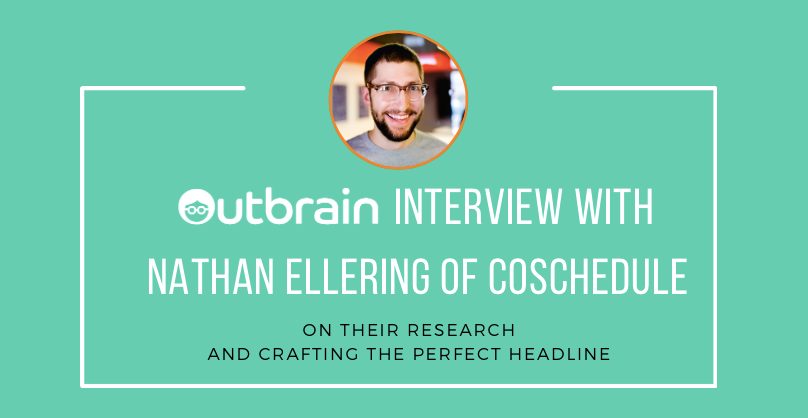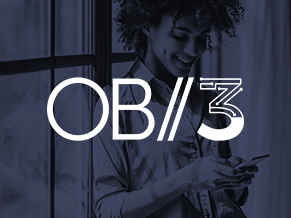Nathan Ellering of CoSchedule on Their Research and Crafting the Perfect Headline

Headline writing is an art, and as we described last week in our article about “How to Write an Outstanding Blog Post Headline,” it is also partly a science.
Full-service content marketing and social platform CoSchedule knows that which is why they developed their “Headline Analyzer” for digital marketers looking to strike the perfect balance.
Interested in learning how it works, we used the tool and combined best practices with sheer volume to produce our own headline scored of 74:
But what research goes into their scoring system, what can content marketers take away from it, and how have headline trends changed in the past few years?
For more on CoSchedule’s research and crafting the perfect headline, we spoke with Nathan Ellering, Content Marketing Lead of CoSchedule:
Outbrain: Why is it important for blog post headlines to contain a mix of common, uncommon, emotional, and power words?
Nathan Ellering: From recent research, we’ve found that lots of headlines are generic, meaning they’re label headlines that essentially target only a keyword. While that’s fine for search engines, that same research tells us when you connect your headlines into a human emotion—like saving time and money, or becoming better at something—those headlines get more clickthroughs and social shares.
The mix of common, uncommon, emotional, and power words was a way for us to describe that phenomenon. Basically, most headlines would only contain common or uncommon words, but you’ll have a much higher likelihood of getting more out of your headline if you add in emotional and power words.
Emotional words are just as you’d think—ones that spark curiosity and intrigue, and bring the reader in to know what your content is all about. Power words are a coupling of emotional words together.
Here’s a list of some of the words you can use in the headline analyzer to explain the four categories a bit better (and that will help you write even better headlines–increasing your score and grade):
Outbrain: What are some examples of headlines that have scored highest on your headline analyzer?
Ellering: If you think of us as a teacher, we don’t always give you a perfect score—even if your headline is great. It’s actually pretty tough to get a 100, so if you shoot for anything 70 or more, you’ve got an awesome headline.
We know that how to, list and question headlines perform really well, so that’s really what we advocate.
This graphic gives some pretty good structures that should perform well in the headline analyzer:
Outbrain: What are some takeaways for content marketers from these top-performing headlines?
Ellering: Honestly, it’s really about showing your value proposition for your content right in your headline. Think about it:
“Wedding Budgets”
That’s a real headline in our system.
Now, if you wanted to make that more emotional to make your readers feel like they missed out if they don’t click through, you could change that headline to something like:
“How To Stretch Your Wedding Budget To Make It The Perfect Day”
You can see the appeal there with a unique angle and the hook is catchy—people want to save money, and weddings are typically mega expensive.
I’d suggest finding your keyword for your post first, then writing about 25 headlines with the headline analyzer. From there, you can choose the one that works best for your content.
That’s a practice Upworthy does for every post, and hey, if it works for them to increase social shares and clickthroughs, why wouldn’t it work for you?
Outbrain: How important is it to convey strong positive or negative emotions in a headline? Does one type work better than another?
Ellering: Thinking of super strong or negative emotions in your headline is a really interesting concept. From our research, people like to click through negative-sounding headlines. It might be because of the mystery behind the scenes—the fact that finally someone thinks about things differently than everyone else.
The best thing to do is to stay away from bland headlines that have no emotional connection whatsoever.
For example, I wrote a post awhile back for Convince and Convert:
I could have labeled it just by the keyword: editorial calendar.
#Boring
But I chose to go negative with it, appealing to the fear of missing out.
That post performed super well and still gets lots of social shares.
It makes the reader instantly feel like they’re doing something wrong (which may sound risky because it’s super negative) but then promises a resolution (how to make your editorial calendar the best ever).
That’s an awesome headline that scores an 80 with the analyzer.
Outbrain: How have headline trends changed in the past few years?
Ellering: While our headline analyzer counts your character length and amount of words, I don’t go too much by that. I think your headline needs to be as long as you need it to be these days to communicate something interesting, different, or your value proposition.
I still feel keywords are super important to include in your headlines, but click bait ones are going away (You’ll Never Guess Why… or 40 Tips For … [#39 Is A Game Changer]).
People are too smart for that BS.
I also feel like “Why” post headlines aren’t powerful. If someone is looking for content on a subject, they already know the why—they’re looking for the how.
Focus on creating actionable content—and then let your readers know it’s actionable in your headlines.
Outbrain: Your team has outlined different headline best practices for SEO, social shares, and engagement. What advice do you have for B2B content marketers, where the content may be a little dry? How can they try to ensure a high click-through rate while also attracting the right audience?
Ellering: Just because I’m using the words emotional headlines a lot doesn’t mean they’re flowery or click bait. If you think, even in B2B, that procurement folks aren’t buying based on emotion, you’re wrong.
They buy from businesses that make it easy for them—with simple tools, processes, places where they can save time.
Think about procurement people for a second and the emotions that make them purchase from you or your competition. Why do they want to save time? So they can work more, or so they can make it home on time to see their families?
Think about your core audience’s emotional connection to your products when you craft your content and your headlines. Even in B2B, purchases are emotionally-driven, which is something you can appeal to in your headlines.
It boils down to the now-infamous saying, “Know your audience.”


![[Event Recap] 3 Highlights from Outbrain’s 2021 Unveil](https://www.outbrain.com/blog/wp-content/uploads/2021/01/OB-Blog-Post-Regular-Thumbnail-Unveil-Recap.jpg)









